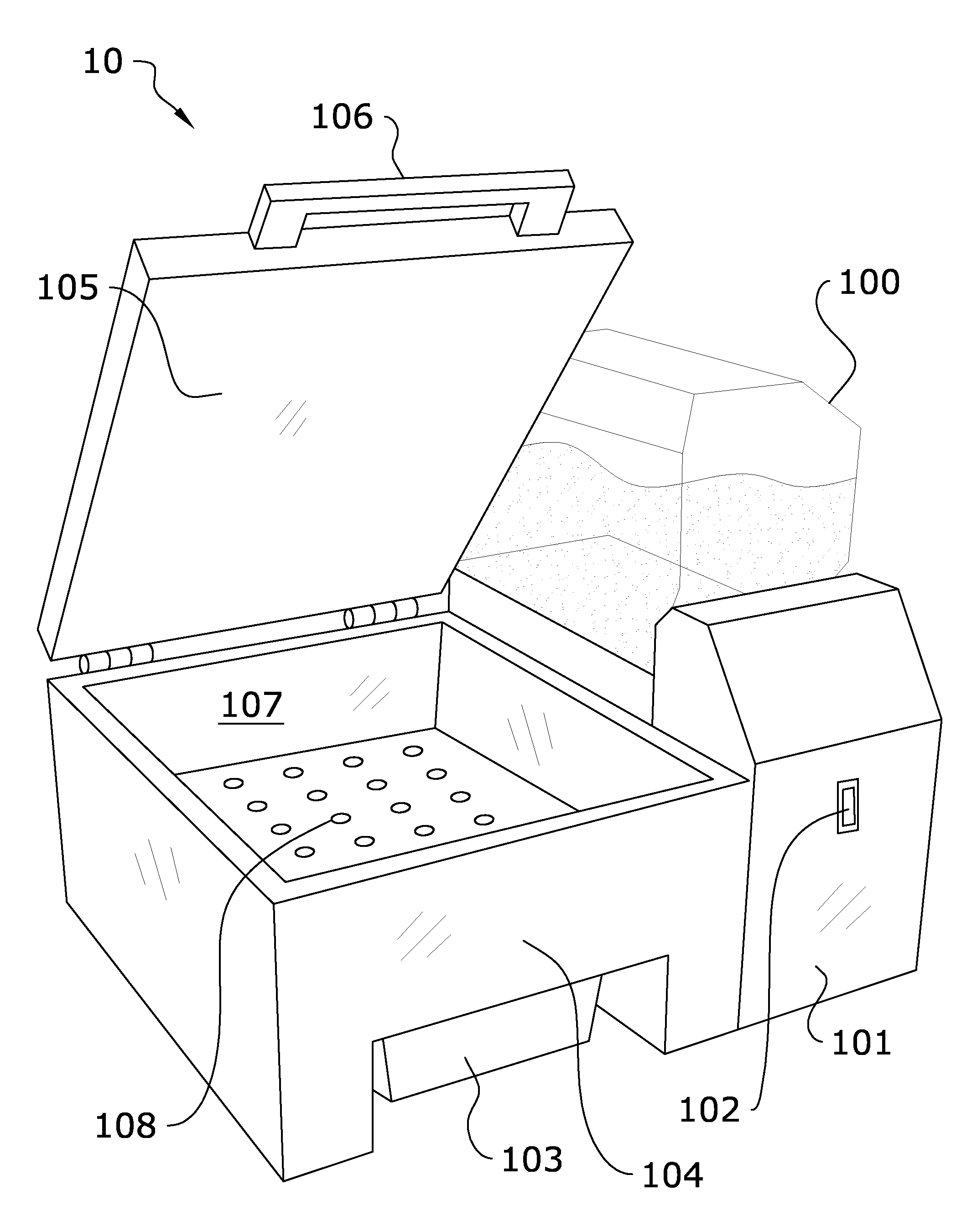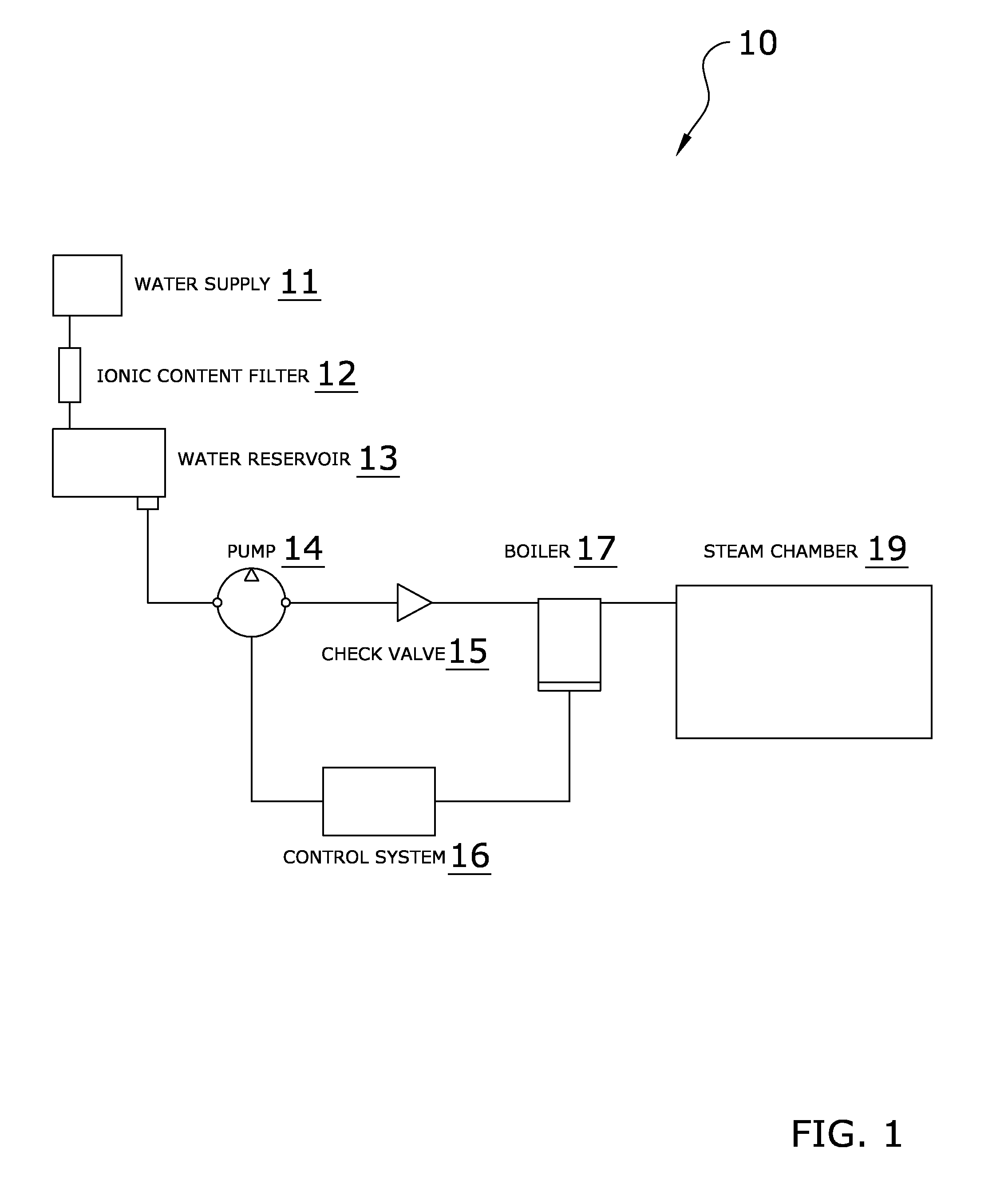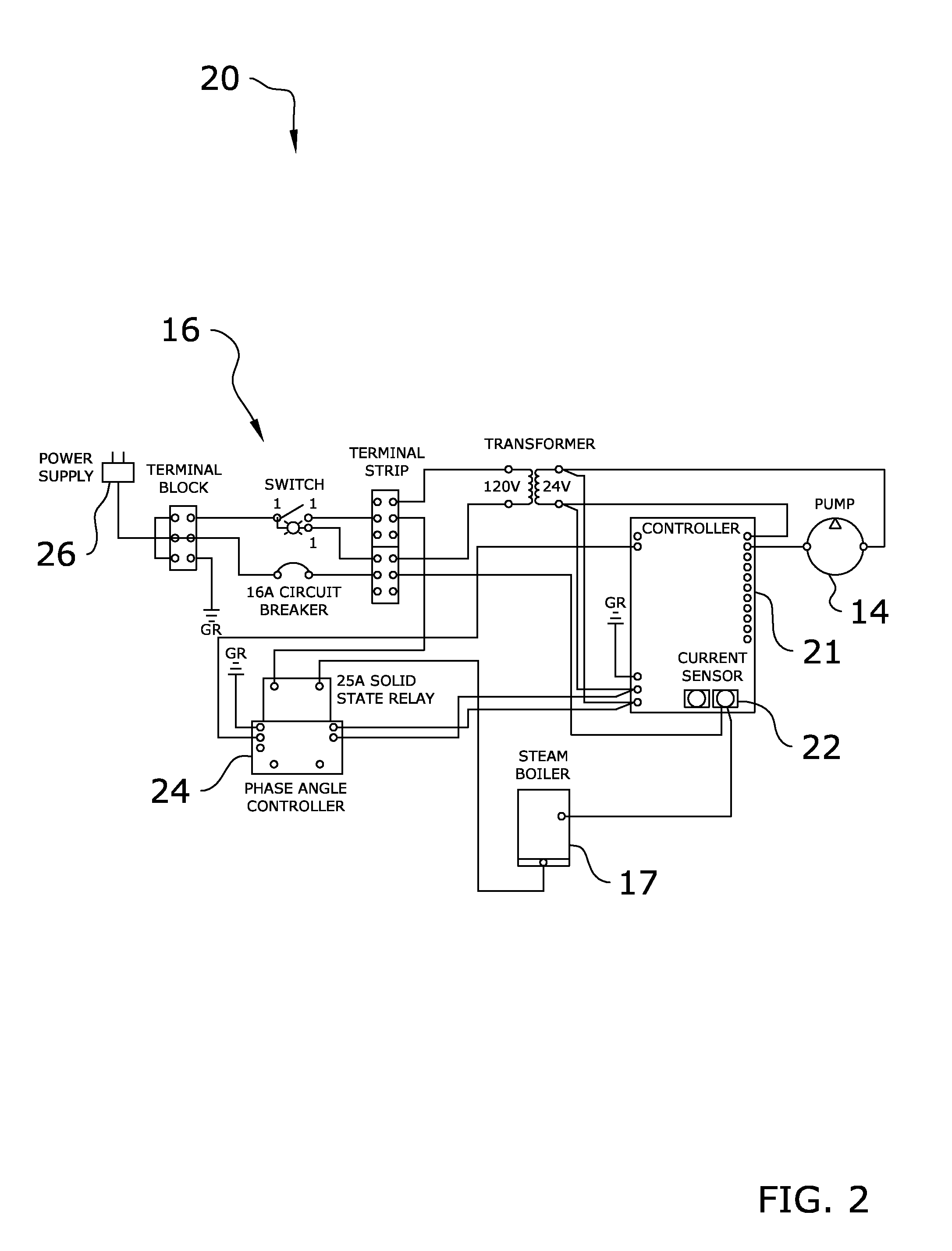Steam Generator System
a generator and steam technology, applied in the field of steam generators, can solve the problems of excessive energy consumption, waste, and delay in heating water to sufficient temperature to generate steam, and achieve the effects of reducing maintenance and repair costs, quick and efficient conversion of water to steam, and eliminating maintenance and repair problems
- Summary
- Abstract
- Description
- Claims
- Application Information
AI Technical Summary
Benefits of technology
Problems solved by technology
Method used
Image
Examples
Embodiment Construction
Turning now descriptively to the drawings, in which similar reference characters denote similar elements throughout the several views, FIGS. 1 through 9 illustrate a steam generator system 10 which comprises a supply of water 11 received by a heating tank 17 for producing steam in a continuous, intermittent, or a determinant amount, via electrodes and a control system 16. The steam is rapidly created via direct conversion of electrical energy to heat in the water molecules that are to become steam. Also possibly included are a water reservoir 13, filter 12, pump 14, check valve 15, and various optional embodiments for the heating tank 17.
FIG. 1 illustrates an exemplary flow diagram of the present invention illustrating a water reservoir 13 utilized for holding supply of water 11 to produce steam. It is appreciated that in an alternate embodiment, a water connection could be provided for a continuous supply in place of or in addition to the water reservoir 13. The water reservoir 13 ...
PUM
 Login to View More
Login to View More Abstract
Description
Claims
Application Information
 Login to View More
Login to View More - R&D
- Intellectual Property
- Life Sciences
- Materials
- Tech Scout
- Unparalleled Data Quality
- Higher Quality Content
- 60% Fewer Hallucinations
Browse by: Latest US Patents, China's latest patents, Technical Efficacy Thesaurus, Application Domain, Technology Topic, Popular Technical Reports.
© 2025 PatSnap. All rights reserved.Legal|Privacy policy|Modern Slavery Act Transparency Statement|Sitemap|About US| Contact US: help@patsnap.com



